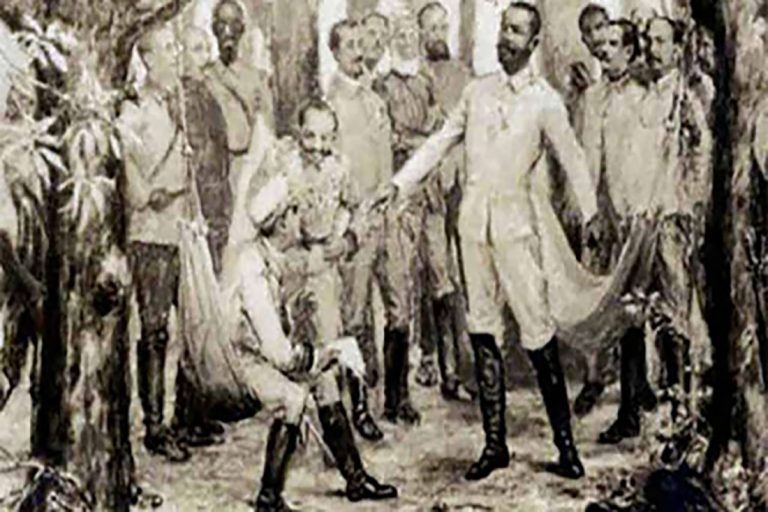On February 10th, 1878, some Cuban officials signed the Zanjón Pact with Spain, which ended the war, without recognizing the independence of Cuba.
In this Pact the bases for a Free Cuba were not established, thus generating the repudiation of some personalities of the revolutionary fight, among which is General Antonio Maceo; who called for a meeting with the Spanish on March 15th, 1878 in their camp in Mangos de Baraguá, East province.
Maceo met with General Martínez Campos to learn about the options he offered. But The Bronce Titan refused to accept a peace without independence and without the abolition of slavery, so he decided to continue the war. This historical interview is known as the Protest of Baraguá, and through the centuries-old struggles of the Cuban people it has been a symbol of revolutionary intransigence.
At this meeting, several officers were present along with Maceo, including Fernando Figueredo Socarrás from Camagüey, who was born in Puerto Príncipe on February 9th, 1846, his father Bernardo Figueredo y Téllez was from Bayamo and his mother Tomasa Socarrás de Varona from Camaguey.
He studied in Bayamo and Havana, at the age of 18 he went on to study at the Troy School of Engineering in New York, but upon learning of the country’s situation, he returned to Bayamo in 1868 and joined Carlos Manuel de Céspedes’s troops.
Figueredo held several important positions in the Cuban independence government, among them, secretary of Céspedes. He married the young Juana Antúnez Antúnez, on November 3rd, 1873, in the middle of the war. With her, he had nine children. Tomás Estrada Palma appointed him Chancellor and Secretary of the Government Council of the Republic in Arms. In 1875 and 1876 Figueredo was elected to the House of Representatives of the Republic in Arms. He was exiled and had to stay in the Dominican Republic.
In 1881 he moved to Key West, Florida, United States. There he lived for several years until the end of the second Cuban war for independence in 1898. While staying in Key West he gave a series of lectures on the Ten Years’ War between 1885 and 1888, which later were included in the texts of his book The Yara Revolution. Starting in 1891, he offered José Martí all his support for the beginning of the coming stage of struggle, as a delegate of the Cuban Revolutionary Party in Florida.
After the Republic was constituted in 1902, he held various government positions, including Director-General of Communications and General Treasurer of the Republic. He was President of the Academy of Cuban History. Already in poor health, he wrote Praise to José Miró Argenter, which he could not read personally at the Academy of History since he died of natural causes at the age of 83 in Havana, on April 13th, 1929.
Translated by: Aileen Álvarez García






